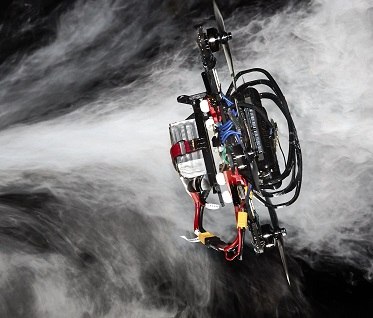
Views: 28
– For the first time, an autonomous flying quadcopter outlasted two humans in a race of Professional Drone Pilots. The success is based on a new algorithm developed by researchers at the University of Zurich. It calculates the ideal trajectory and takes into account the drone’s limits.
Courtesy Zurich University UZH: Drones must be fast so they can be used effectively. Due to the limited battery life they have to perform all tasks, such as finding survivors in a disaster area inspecting a building or delivering goods, all done in a snap.
They start different waypoints or inspect certain places and have to choose the best trajectory each time and the correct acceleration.
Algorithm outperforms professional pilots
The best human drone pilots do very well in such maneuvers and have autonomous drone racing systems that have always been outclassed. Now a research group at the University of Zurich (UZH) has developed an algorithm that can find the fastest flight path, for a quadrotor: a fast drone with four propellers, through several passage points in a round course. “Our drone has flown the fastest lap and has two world-class pilots defeated on an experimental track,” says Davide Scaramuzza, who heads the Robotics and Perception Group at UZH and Grand Rescue Robotics.
Challenge from NCCR Robotics, which funded the research.
“This algorithm is the first to generate the fastest possible trajectories and at the same time it really takes into account the drone’s limits,” says Scaramuzza.
The previous work was simplified both in the quadrotor model and the representation of the flight path, which, therefore, were less than ideal. “Until now, the trajectory has been divided into sections and assigned to specific waypoints.
The main new idea is that our algorithm just tells the drone that it has to touch all the waypoints it should fly, but not how or when to do it,” adds Philipp Föhn, doctoral student and first author of the study.
External cameras provide real-time position information, the researchers let the algorithm and two human racers pass through the same quadrotor flying on a race track.
They use external cameras to precisely control movement and, in the case of the autonomous drone, the real-time algorithm to indicate where the drone was. To ensure a fair comparison, it gave professional riders the opportunity to practice on the track before the race. But the algorithm won: all the laps were faster than people. Also, the Communication
Steady performance: once the algorithm has found the best trajectory, it can do it unlike human pilots, it reproduces the route identically many times.
Before it can be used commercially, the algorithm must be mathematically simplified, because it currently takes up to an hour for the computer to find and calculate the fastest possible trajectory.
In addition, the drone is still in addition to calculating the location of the instructed cameras. In the future, scientists want to use onboard cameras for this purpose. The evidence that an autonomous drone can, in principle, fly faster than human pilots is very promising. “This algorithm can be used in a number of ways, for example for parcel deliveries with drones, for inspections or for search and rescue operations in emergency situations,” says Scaramuzza.
Literature: Philipp Foehn, Angel Romero, Davide Scaramuzza. Time-Optimized Planning for Waypoint Quadcopter Flight – Science Robotics. July 21, 2021. DOI: 10.1126 / scirobotics.abh1221
Contact:
Prof. Dr. Davide Scaramuzza Email: sdavide@ifi.uzh.ch
Robotics and Perception Group / Institute of Computer Science / University of Zurich
Philipp Foehn: Email: foehn@ifi.uzh.ch
Robotics and Perception Group / Institute of Computer Science / University of Zurich
Related article: Interceptor Kamikaze drones
Leave a Reply